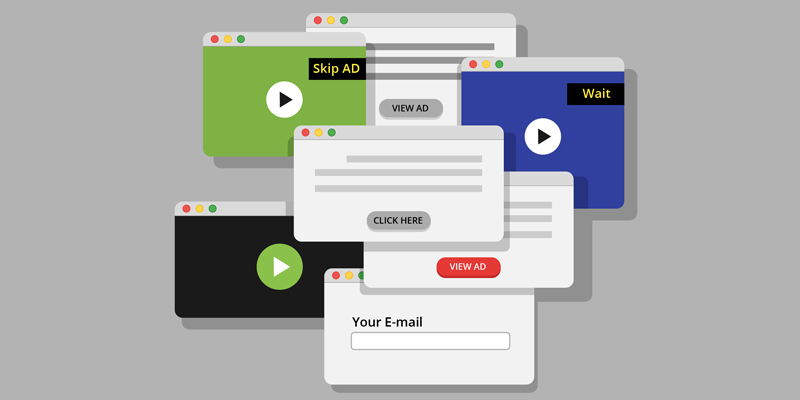E-commerce is the buying and selling products or services exclusively through electronic channels. This buying and selling could be categorized into online shopping or business-to-consumers (B2C), where individual consumers reach out to businesses; B2B, where manufacturers or wholesalers exchange products; and C2C, where auction sites like eBay, ShopGoodwill, and Etsy sell products.
Revenue Generated by the eCommerce Industry
eCommerce has made it easy for consumers to shop anywhere, anytime. They can shop for different products, compare pricing across various sites, and choose the best deal. If you had to do the same with physical stores, you might get exhausted by checking just two or three stores. Because of this and various other benefits, consumers lean more toward the e-commerce market, making it one of the highest revenue-generating industries.
Retail e-commerce sales in the United States are projected to grow quickly in the coming years, going from $322.17B in 2016 to over $485B in 2024. Consumer satisfaction with online sales is also relatively high because of the growing mobile commerce trend (m-commerce). In 2016, around 136 million users made at least one purchase via a web browser or mobile app from their mobile devices. As a result, several businesses are budding yearly, increasing the competition. So, it would help if you cut through the competition to reach your target audience.
How Do You Cut Through the Competition in Ecommerce Business?
I’m not exaggerating when I say that big guys like Amazon, eBay, and Walmart have dominated the eCommerce industry because of the unique lead generation strategies they have implemented in their business. Most of the other retailers tend to follow them closely and quickly incorporate them into their business.
The E-commerce industry demands creativity and constant improvement to stay ahead of the competition. You can incorporate the below lead generation strategies to attract more qualified traffic to your e-commerce site and facilitate the flow of leads through the sales funnel.
Proven Effective Lead Generation Strategies for Your eCommerce Business
Let’s take a look at some of the lead generation strategies that are implemented and worked for many of the eCommerce companies, which are mentioned below:
1. Optimize for SEO and Content Marketing
Search engine optimization (SEO) and content marketing are crucial to attracting organic traffic. By creating high-quality, informative content that addresses the needs and interests of your target audience, you can improve your ranking in search engine results and attract potential customers. Hiring SEO services from a reputed agency to manage and organize a result-driven strategy to improve your organic presence in the SERP results.
- Keyword Optimization: Identify relevant keywords that potential buyers are searching for and integrate them into your content, including product descriptions, blog posts, and landing pages.
- Educational Content: Write blogs, guides, and videos that offer value to visitors. Content can range from product comparison guides to usage tips, industry trends, or problem-solving advice related to your products.
- On-page and Off-page SEO: Ensure that your website is technically optimized for SEO and focus on building quality backlinks to boost domain authority and visibility.
This strategy helps generate quality leads by positioning your brand as an authority and making it easier for prospective customers to discover your products.
2. Use email marketing and personalization

Email marketing remains one of the most effective channels for nurturing and converting leads in e-commerce. Personalized email campaigns can capture interest, prompt return visits, and drive sales.
- Welcome and Abandoned Cart Emails: Send welcome emails to new subscribers, offering discounts or special deals. Abandoned cart emails can remind potential customers of items they left behind, encouraging them to complete their purchases.
- Product Recommendations: Use customer data and past purchase behavior to recommend products that align with each lead’s preferences, which increases the likelihood of conversion.
- Discount Offers and Exclusive Content: Keep your audience engaged by sharing exclusive discounts, upcoming sales, or loyalty rewards.
By leveraging personalization and automation, e-commerce businesses can reach potential customers with the right message at the right time, significantly improving conversion rates.
Email marketing is a proven strategy for generating better-qualified leads for the eCommerce business. 42% of companies say email is one of their most effective lead generation channels, and 88% of B2B marketers cite email as one of their most effective lead generation strategies. Email marketing services based on consumer purchase history or specified interests can drive more revenue.
3. Utilize the scope of CRM software for behavioral targeting
CRM software gives a 360-degree view of customers across all touchpoints and interactions. It helps segment your audience and allows salespeople to take a focused approach. Segmentation can be based on gender, interests, and purchase history, which further tells about preferred brands, purchased items, the price range of purchased items, and more. This information allows you to target customers with particular promotions through online ads or email marketing.
I am a fan of Deepika Padukone’s All About You brand and often receive promotional emails for that product.
4. Allow customers to promote your brand

Customers promoting you build trust among customers and generate more organic leads. You can ask your customers to refer your brand to their family and friends and, in return, provide gift coupons. This works perfectly because prospects believe in customers. You can also run campaigns to the leads generated through referral programs.
One best example of this is Uber’s refer-and-earn-free-rides program. Every Uber mobile app user has an invite code, and when their friends sign up with this unique invite code, they receive a free first ride.
5. Utilize the scope of popups on the website

Pop-ups are a new way e-commerce sites generate leads by gathering information and establishing contact. In your pop-up messages, you can link a coupon code or offer a sale.
Belk uses this pop-up on its website and requires consumers to collect email IDs to sign up and get more details about the sale. It creates a variety of promotions for different seasons and holidays.
PropTip: Multiple Call-to-action (CTAs)

Use different calls to action on your website or promotional emails for various offers or coupon codes. Link the CTAs to landing pages where customers should fill out a form to access the offer. This allows users to click on the offers they are interested in, and you can benefit by generating more leads.
Conclusion
Effective lead generation strategies in the e-commerce industry require a multifaceted approach, utilizing SEO, social media, email marketing, landing pages, and customer incentives. By leveraging these strategies, e-commerce businesses can attract quality leads, boost sales, and drive growth. Implementing and refining these tactics based on data and performance can significantly enhance the success of lead-generation efforts in this competitive digital landscape, as well as hiring a lead generation company to handle and manage to generate potential leads that get converted to improve your business ROI.






